
Intel Pentium N3700 Benchmark, Test and specs
Last updated:
The Intel Pentium N3700 has 4 cores with 4 threads and is based on the 7. gen of the Intel Pentium series. The processor uses a mainboard with the BGA 1170 socket and was released in Q2/2015. The Intel Pentium N3700 scores 229 points in the Geekbench 5 single-core benchmark. In the Geekbench 5 multi-core benchmark, the result is 770 points.
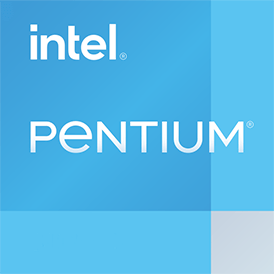
| Name: | Intel Pentium N3700 |
|---|---|
| Family: | Intel Pentium (150) |
| CPU group: | Intel Pentium J3000/N3700 (3) |
| Architecture: | Braswell |
| Segment: | Desktop / Server |
| Generation: | 7 |
| Predecessor: | -- |
| Successor: | -- |
CPU Cores and Base Frequency
The Intel Pentium N3700 has 4 CPU cores and can calculate 4 threads in parallel. The clock frequency of the Intel Pentium N3700 is 1.60 GHz (2.40 GHz). The number of CPU cores greatly affects the speed of the processor and is an important performance indicator.
| CPU Cores / Threads: | 4 / 4 |
|---|---|
| Core architecture: | normal |
| Cores: | 4x |
| Hyperthreading / SMT: | No |
|---|---|
| Overclocking: | No |
| Frequency: | 1.60 GHz |
| Turbo Frequency (1 Core): | 2.40 GHz |
| Turbo Frequency (4 Cores): | 2.40 GHz |
Internal Graphics
The Intel Pentium N3700 has integrated graphics, called iGPU for short. Specifically, the Intel Pentium N3700 uses the Intel HD Graphics 405 (16EU), which has 128 texture shaders and 16 execution units. The iGPU uses the system's main memory as graphics memory and sits on the processor's die.
| GPU name: | Intel HD Graphics 405 (16EU) |
|---|---|
| GPU frequency: | 0.40 GHz |
| GPU (Turbo): | 0.70 GHz |
| Compute units: | 16 |
| Shader: | 128 |
| Hardware Raytracing: | No |
| Release date: | Q2/2015 |
| Max. displays: | 3 |
|---|---|
| Generation: | 8 |
| Direct X: | 12 |
| Technology: | 14 nm |
| Max. GPU Memory: | 8 GB |
| Frame Generation: | No |
Hardware codec support
A photo or video codec that is accelerated in hardware can greatly accelerate the working speed of a processor and extend the battery life of notebooks or smartphones when playing videos.
| h265 / HEVC (8 bit): | No |
|---|---|
| h265 / HEVC (10 bit): | No |
| h264: | Decode / Encode |
| VP8: | Decode |
| VP9: | No |
| AV1: | No |
|---|---|
| AVC: | Decode / Encode |
| VC-1: | Decode |
| JPEG: | Decode |
Memory & PCIeThe processor can use up to 8 GB memory in 2 (Dual Channel) memory channels. The maximum memory bandwidth is 25.6 GB/s. The memory type as well as the amount of memory can greatly affect the speed of the system. |
|
| Memory type: | Memory bandwidth: |
|---|---|
| DDR3-1600 | 25.6 GB/s |
| Max. Memory: | 8 GB |
| Memory channels: | 2 (Dual Channel) |
| ECC: | No |
| PCIe: | 2.0 x 4 |
| PCIe Bandwidth: | 2.0 GB/s |
Thermal ManagementThe thermal design power (TDP for short) of the processor is 6 W. The TDP specifies the necessary cooling solution that is required to cool the processor sufficiently. The TDP usually gives a rough idea of the actual power consumption of the CPU. |
|
|---|---|
| TDP (PL1 / PBP): | 6 W |
| TDP (PL2): | -- |
| TDP up: | -- |
| TDP down: | 4 W |
| Tjunction max.: | 90 °C |
Technical details
The Intel Pentium N3700 is made in 14 nm. The smaller the manufacturing process of a CPU, the more modern and energy-efficient it is. Overall, the processor has 2.00 MB cache. A large cache can greatly speed up the processor's speed in some cases such as games.
| Technology: | 14 nm |
|---|---|
| Chip design: | Monolithic |
| Socket: | BGA 1170 |
| L2-Cache: | -- |
| L3-Cache: | 2.00 MB |
| AES-NI: | Yes |
| Operating systems: | Windows 10, Linux |
| Virtualization: | VT-x, VT-x EPT |
|---|---|
| Instruction set (ISA): | x86-64 (64 bit) |
| ISA extensions: | SSE4.1, SSE4.2 |
| Release date: | Q2/2015 |
| Release price: | -- |
| Part Number: | -- |
| Documents: | Technical data sheet |
Rate this processor
Benchmark results

The benchmark results for the Intel Pentium N3700 have been carefully checked by us. We only publish benchmark results that have been created by us or that have been submitted by a visitor and then checked by a team member. All results are based on and fullfill our benchmark guidelines.
Geekbench 5, 64bit (Single-Core)
Geekbench 5 is a cross plattform benchmark that heavily uses the systems memory. A fast memory will push the result a lot. The single-core test only uses one CPU core, the amount of cores or hyperthreading ability doesn't count.
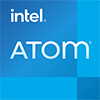
|
Intel Atom x5-Z8550
4C 4T @ 2.40 GHz |
||

|
Intel Celeron 847
2C 2T @ 1.10 GHz |
||
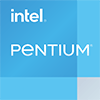
|
Intel Pentium T2370
2C 2T @ 1.73 GHz |
||
|
|
Intel Pentium N3700
4C 4T @ 2.40 GHz |
||

|
Intel Celeron N2820
2C 2T @ 2.39 GHz |
||

|
Intel Celeron N3160
4C 4T @ 2.24 GHz |
||

|
Intel Celeron J1900
4C 4T @ 2.42 GHz |
||
Geekbench 5, 64bit (Multi-Core)
Geekbench 5 is a cross plattform benchmark that heavily uses the systems memory. A fast memory will push the result a lot. The multi-core test involves all CPU cores and taks a big advantage of hyperthreading.

|
Intel Pentium 3556U
2C 2T @ 1.70 GHz |
||
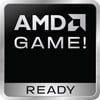
|
AMD Phenom II X2 560
2C 2T @ 3.30 GHz |
||
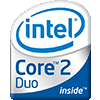
|
Intel Core2 Duo E8300
2C 2T @ 2.83 GHz |
||
|
|
Intel Pentium N3700
4C 4T @ 2.40 GHz |
||

|
Intel Celeron N4000
2C 2T @ 2.60 GHz |
||

|
MediaTek MT6752M
8C 8T @ 1.50 GHz |
||

|
UNISOC SC9863A
8C 8T @ 1.20 GHz |
||
Geekbench 6 (Single-Core)
Geekbench 6 is a benchmark for modern computers, notebooks and smartphones. What is new is an optimized utilization of newer CPU architectures, e.g. based on the big.LITTLE concept and combining CPU cores of different sizes. The single-core benchmark only evaluates the performance of the fastest CPU core, the number of CPU cores in a processor is irrelevant here.

|
Intel Celeron N2830
2C 2T @ 2.41 GHz |
||

|
MediaTek MT8168
4C 4T @ 2.00 GHz |
||

|
Intel Atom x7-Z8700
4C 4T @ 2.40 GHz |
||
|
|
Intel Pentium N3700
4C 4T @ 2.40 GHz |
||

|
Intel Celeron J1900
4C 4T @ 2.42 GHz |
||

|
Intel Celeron N2820
2C 2T @ 2.39 GHz |
||

|
Intel Atom x5-Z8500
4C 4T @ 2.24 GHz |
||
Geekbench 6 (Multi-Core)
Geekbench 6 is a benchmark for modern computers, notebooks and smartphones. What is new is an optimized utilization of newer CPU architectures, e.g. based on the big.LITTLE concept and combining CPU cores of different sizes. The multi-core benchmark evaluates the performance of all of the processor's CPU cores. Virtual thread improvements such as AMD SMT or Intel's Hyper-Threading have a positive impact on the benchmark result.

|
Intel Atom x5-Z8550
4C 4T @ 2.40 GHz |
||

|
AMD GX-415GA
4C 4T @ 1.50 GHz |
||

|
Intel Celeron J1900
4C 4T @ 2.42 GHz |
||
|
|
Intel Pentium N3700
4C 4T @ 2.40 GHz |
||

|
Intel Pentium 2117U
2C 2T @ 1.80 GHz |
||

|
Intel Pentium 3558U
2C 2T @ 1.70 GHz |
||

|
Intel Pentium N3520
4C 4T @ 2.42 GHz |
||
iGPU - FP32 Performance (Single-precision GFLOPS)
The theoretical computing performance of the internal graphics unit of the processor with simple accuracy (32 bit) in GFLOPS. GFLOPS indicates how many billion floating point operations the iGPU can perform per second.

|
Intel Celeron G3900
Intel HD Graphics 510 @ 0.95 GHz |
||

|
Intel Pentium 4405U
Intel HD Graphics 510 @ 0.95 GHz |
||

|
Intel Pentium G4400T
Intel HD Graphics 510 @ 0.95 GHz |
||
|
|
Intel Pentium N3700
Intel HD Graphics 405 (16EU) @ 0.70 GHz |
||

|
Intel Pentium N3710
Intel HD Graphics 405 (16EU) @ 0.70 GHz |
||

|
Intel Pentium 3550M
Intel HD Graphics (Haswell GT1) @ 1.10 GHz |
||

|
Intel Pentium 3560M
Intel HD Graphics (Haswell GT1) @ 1.10 GHz |
||
Estimated results for PassMark CPU Mark
Some of the CPUs listed below have been benchmarked by CPU-monkey. However the majority of CPUs have not been tested and the results have been estimated by a CPU-monkey’s secret proprietary formula. As such they do not accurately reflect the actual Passmark CPU mark values and are not endorsed by PassMark Software Pty Ltd.

|
Intel Celeron 3765U
2C 2T @ 1.90 GHz |
||
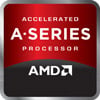
|
AMD A4-3310MX
2C 2T @ 2.50 GHz |
||

|
AMD Athlon II X2 265
2C 2T @ 3.30 GHz |
||
|
|
Intel Pentium N3700
4C 4T @ 2.40 GHz |
||

|
AMD A4-3300M
2C 2T @ 2.50 GHz |
||

|
Intel Pentium J2900
4C 4T @ 2.67 GHz |
||

|
Intel Atom x5-Z8500
4C 4T @ 2.24 GHz |
||
CPU-Z Benchmark 17 (Multi-Core)
The CPU-Z benchmark measures a processor's performance by measuring the time it takes the system to complete all benchmark calculations. The faster the benchmark is completed, the higher the score.

|
Intel Celeron 1000M
2C 2T @ 1.80 GHz |
||

|
Intel Pentium 3558U
2C 2T @ 1.70 GHz |
||

|
Intel Pentium T4400
2C 2T @ 2.20 GHz |
||
|
|
Intel Pentium N3700
4C 4T @ 1.60 GHz |
||

|
Intel Pentium E2200
2C 2T @ 2.20 GHz |
||

|
Intel Core2 Duo T6570
2C 2T @ 2.10 GHz |
||

|
Intel Pentium B960
2C 2T @ 2.20 GHz |
||
Cinebench R15 (Single-Core)
Cinebench R15 is the successor of Cinebench 11.5 and is also based on the Cinema 4 Suite. Cinema 4 is a worldwide used software to create 3D forms. The single-core test only uses one CPU core, the amount of cores or hyperthreading ability doesn't count.

|
Intel Celeron J1800
2C 2T @ 2.58 GHz |
||

|
Intel Celeron N2840
2C 2T @ 2.58 GHz |
||

|
Intel Pentium N3540
4C 4T @ 2.66 GHz |
||
|
|
Intel Pentium N3700
4C 4T @ 2.40 GHz |
||

|
Intel Atom x7-E3950
4C 4T @ 2.00 GHz |
||

|
Intel Atom x5-Z8550
4C 4T @ 2.40 GHz |
||

|
Intel Atom x7-Z8700
4C 4T @ 2.40 GHz |
||
Cinebench R15 (Multi-Core)
Cinebench R15 is the successor of Cinebench 11.5 and is also based on the Cinema 4 Suite. Cinema 4 is a worldwide used software to create 3D forms. The multi-core test involves all CPU cores and taks a big advantage of hyperthreading.

|
AMD Athlon II X2 370K
2C 2T @ 4.20 GHz |
||

|
Intel Celeron J1900
4C 4T @ 2.42 GHz |
||

|
AMD A8-7100
4C 4T @ 2.40 GHz |
||
|
|
Intel Pentium N3700
4C 4T @ 2.40 GHz |
||

|
Intel Atom x5-Z8550
4C 4T @ 2.40 GHz |
||

|
Intel Atom x7-Z8700
4C 4T @ 2.40 GHz |
||

|
Intel Pentium N3510
4C 4T @ 2.40 GHz |
||
Benchmarks

Geekbench 5 (SC)
2,488 entries
2,488 entries

Geekbench 5 (MC)
2,461 entries
2,461 entries

Geekbench 6 (SC)
1,755 entries
1,755 entries

Geekbench 6 (MC)
1,703 entries
1,703 entries

FP32 SP (iGPU)
2,039 entries
2,039 entries
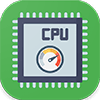
PassMark CPU-Mark
2,392 entries
2,392 entries
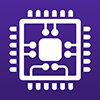
CPU-Z Benchmark 17 (MC)
733 entries
733 entries

Cinebench R15 (SC)
1,106 entries
1,106 entries

Cinebench R15 (MC)
1,101 entries
1,101 entries

Geekbench 3 (SC)
942 entries
942 entries

Geekbench 3 (MC)
938 entries
938 entries

Cinebench R11.5 (SC)
825 entries
825 entries

Cinebench R11.5 (MC)
836 entries
836 entries

Cinebench R11.5 iGPU
383 entries
383 entries
Popular comparisons
back to index





